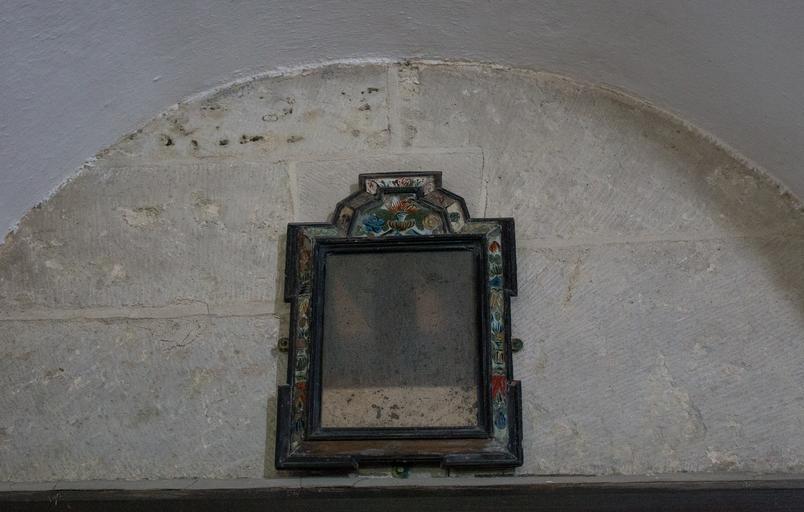MAKE A MEME
View Large Image

| View Original: | Mirror_from_the_Halsewell,_Worth_Matravers_Church.jpg (3457x2201) | |||
| Download: | Original | Medium | Small | Thumb |
| Courtesy of: | www.flickr.com | More Like This | ||
| Keywords: "The Halsewell was an East Indiaman that was wrecked on 6 January 1786 at the start of a voyage from London to Madras. She lost her masts in a violent storm in the English Channel, and was driven onto the rocks below a cliff on the Isle of Purbeck in Dorset, England. The vicar of nearby Worth Matravers recorded the event in his parish register: On the 4th, 5th and 6th day of January, a remarkable snow storm, sometimes a hurricane, with the wind at south. On the latter day, at two in the morning, the Halsewell East Indiaman, 758-tons burthen, commanded by Captain Richard Pierce, bound for Bengal, was lost in the rocks between Seacombe and Winspit quarries in this parish. Never did happen so complete a wreck. The ship long before day-break was shattered to pieces... " en.wikipedia.org/wiki/Halsewell_%28East_Indiaman%29 "Many of those that had escaped from the vessel did not survive until morning, some had been dragged off the rocks by the force of the sea and others died from cold and fatigue. Then, when morning came two brave men - the cook and the quartermaster - managed with great skill to climb the cliff face. They staggered to the nearest house, the home of a Mr. Garland, who was the steward of a nearby quarry. He quickly gathered together a party of quarrymen well acquainted with the cliffs and very experienced with ropes and stakes. Ropes were dropped over the cliff into the mouth of the cavern and slowly and perilously the survivors were hauled to safety; some were so numb with cold that they experienced problems just tying the ropes around their bodies. One report suggests that the rescue lasted for almost 24 hours. One of the last persons to be rescued was Meriton, the second mate, who later wrote about the wrecking and the rescue. In total 74 persons were rescued by these methods although it was thought that almost the same number had escaped from the vessel but had died during the night. The death toll of the Halsewell was at least 160 persons - a terrible shipping tragedy. The Captain, his two daughters and the other passengers all went down with the ship. Near the site of the wreck on the cliffs above there are still traces of four long graves, though it is not known how many bodies they contain. The nearby church of Worth Matravers records only one burial from the Halsewell; that of a body washed ashore almost one month later... A few items from the Halsewell have survived; one of which is an hour-glass that runs for four hours. Washed ashore with the green glass intact, it is now in the Dorset County Museum. The mirror, thought to belong to the captain’s daughters is in Worth Matravers Church." dorsetsea.swgfl.org.uk/ "The Halsewell was an East Indiaman that was wrecked on 6 January 1786 at the start of a voyage from London to Madras. She lost her masts in a violent storm in the English Channel, and was driven onto the rocks below a cliff on the Isle of Purbeck in Dorset, England. The vicar of nearby Worth Matravers recorded the event in his parish register: On the 4th, 5th and 6th day of January, a remarkable snow storm, sometimes a hurricane, with the wind at south. On the latter day, at two in the morning, the Halsewell East Indiaman, 758-tons burthen, commanded by Captain Richard Pierce, bound for Bengal, was lost in the rocks between Seacombe and Winspit quarries in this parish. Never did happen so complete a wreck. The ship long before day-break was shattered to pieces... " en.wikipedia.org/wiki/Halsewell_%28East_Indiaman%29 "Many of those that had escaped from the vessel did not survive until morning, some had been dragged off the rocks by the force of the sea and others died from cold and fatigue. Then, when morning came two brave men - the cook and the quartermaster - managed with great skill to climb the cliff face. They staggered to the nearest house, the home of a Mr. Garland, who was the steward of a nearby quarry. He quickly gathered together a party of quarrymen well acquainted with the cliffs and very experienced with ropes and stakes. Ropes were dropped over the cliff into the mouth of the cavern and slowly and perilously the survivors were hauled to safety; some were so numb with cold that they experienced problems just tying the ropes around their bodies. One report suggests that the rescue lasted for almost 24 hours. One of the last persons to be rescued was Meriton, the second mate, who later wrote about the wrecking and the rescue. In total 74 persons were rescued by these methods although it was thought that almost the same number had escaped from the vessel but had died during the night. The death toll of the Halsewell was at least 160 persons - a terrible shipping tragedy. The Captain, his two daughters and the other passengers all went down with the ship. Near the site of the wreck on the cliffs above there are still traces of four long graves, though it is not known how many bodies they contain. The nearby church of Worth Matravers records only one burial from the Halsewell; that of a body washed ashore almost one month later... A few items from the Halsewell have survived; one of which is an hour-glass that runs for four hours. Washed ashore with the green glass intact, it is now in the Dorset County Museum. The mirror, thought to belong to the captain’s daughters is in Worth Matravers Church." dorsetsea.swgfl.org.uk/ | ||||